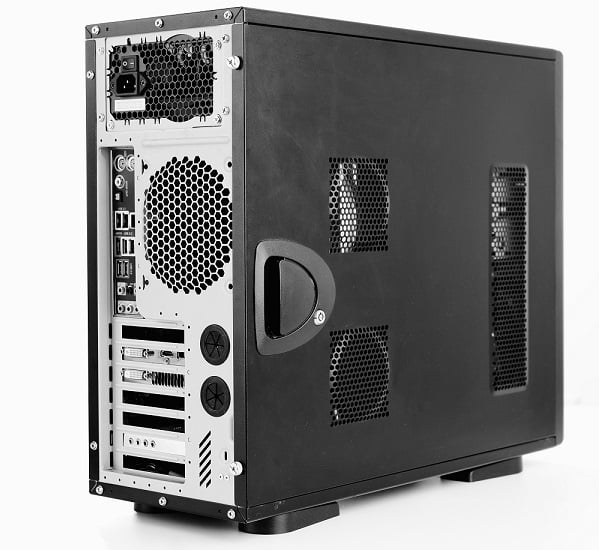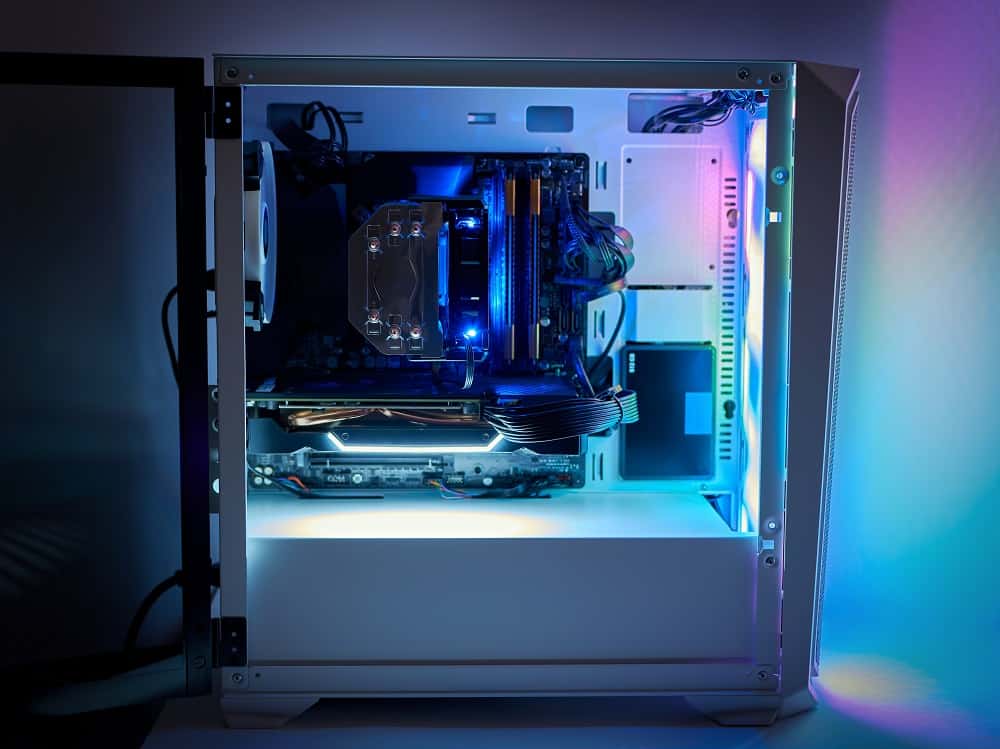Computer case form factors outline the type of motherboard that will fit in the case and the number of components that can be added to the system. Bigger cases can host bigger motherboards and can accommodate more components such as disk drives and graphics cards as well as more powerful cooling systems.
There are two main categories of computer cases: desktop and tower. The desktop case is a singular form factor while tower cases branch into different sub-categories, namely: full tower, mid-tower, and mini-tower. Full tower cases can host full-sized motherboards and are also compatible with smaller motherboards. Mid-tower and mini-tower cases do not fit full-sized motherboards but can fit motherboards in the mini and micro categories such as mini-ATX and micro-ATX motherboards, respectively.
This article will discuss the two main types of computer form factors: desktop and tower. It will explain the advantages and disadvantages of each category of computer form factors as well as its various sub-categories. Lastly, it will explain small form factors (SFF) cases and their unique advantages for minimalist builds.
Desktop Cases
The desktop case is primarily intended to minimize space inside the computer chassis. Usually, desktop cases are placed sideways on the desk and the monitor is placed atop the computer case.
Desktop cases do not have sufficient room for additional components. These computers are designed for entry level computing tasks like browsing the internet, email, and document processing. The slim design of desktop cases cannot accommodate full-sized graphics cards or additional hard disks that are necessary for gaming.
Tower Cases
Tower cases are intended for computers designed for specialized use cases: gaming, rendering, streaming, etc. These cases have ample space inside the computer chassis to host a full-sized graphics card and multiple expansion slots for additional disk drives.
Full Tower

Full tower cases are designed for competitive builds that can handle heavy workloads. The space inside full tower cases can accommodate powerful cooling systems with large fans and radiators to maintain safe temperatures despite performing CPU/GPU-intensive tasks. These cases can accommodate the various sizes of motherboards from EATX motherboards that measure 12 inches by 13 inches to mini-ITX motherboards that measure 17cm by 17cm.
Full tower cases measure at least 18 inches tall and accommodate up to 10 disk drives and 11 PCI slots. It is the optimal case for full-sized ATX motherboards that measure 12 inches by 9.6 inches.
Full tower cases and their corresponding full-size and expanded full-sized motherboards are best for upgradability and support for several expansion slots and superior cooling systems. EATX motherboards, in particular, can host more RAM modules than the standard full-sized ATX motherboard. It also supports multiple GPUs in a single motherboard.
Full tower cases can support larger air and liquid cooling systems. These cases can accommodate 120mm fans and/or triple-radiator water-cooling systems.
An underrated feature of full tower cases is workability. More space within the case makes it easier for users to install computer hardware, components, and other accessories like air- or water-cooling systems.
Mid-Tower

Mid-tower cases are the most commonly used type of computer case. It measures 18 inches by 23 inches and can contain up to 2-4 disk drives. It can accommodate mini-ATX motherboards, measuring 11.2 inches by 8.2 inches as well as micro-ATX motherboards, measuring 9.6 inches by 9.6 inches.
Mid-tower cases are popular because it strikes a balance between upgradability and size. Full tower cases are massive and heavy, even without the computer components installed. Its size also makes it difficult to fit in certain workstations.
The primary difference between full tower cases and mid-tower cases is the support for additional buses and memory slots. Still, mid-tower cases can support up to 7 PCI slots, which is sufficient for most users.
Mid-tower cases can also accommodate multiple GPUs, however, several graphics cards installed in a small space can cause heat related issues.
Similar to full tower cases, mid-tower cases also have a separate compartment at the back of the main panel used to install the motherboard for cable management. This allows cables to be safely lodged in a back compartment for aesthetic and functional purposes. Specifically, it provides a neat look to the computer set-up and also facilitates better airflow within the system.
Mini-Tower
Mini-tower cases measure 7 inches by 14 inches and are the smallest form factor for tower cases. Mini-tower cases can host 2-3 disk drives and 3 PCI slots. It can only host a micro-ATX case measuring 9.6 inches by 9.6 inches.
Due to its small form factor, it can be difficult to install computer components and perform proper cable management. It can also host lesser additional components than larger form factors with larger motherboards.
A mini-tower computer case can be used for building a home theater computer that can be placed on shelves beside the living room television. Its small size provides a distinct advantage in terms of placement flexibility since it is not too big nor too small and can fit in most spaces. It is also the lightest among the tower cases, weighing up to 7 kilograms.
Mini-tower cases have recently become a standard computer case size for budget builds. It is the cheapest among the tower cases and can support micro-ATX motherboards which are becoming standard.
Small Form Factor (SFF)
Small form factor or SFF computer cases are a niche category. These custom cases appear in various forms and sizes including cube and shoe box.
SFF computer cases are typically smaller than desktop computer cases because they are designed primarily for space efficiency and portability.
Due to the small form factor, these computer cases can only fit mini-ITX motherboards. Mini-ITX motherboards measure 6.7 inches by 6.7 inches and only has 2 PCI slots.
The small form factor, can also be be restrictive in terms of cooling system implementation. Coolers designed for SFF cases are typically marketed as "low-profile."
Final Thoughts
Case form factor has a direct affect on the size and type of motherboard that can be installed. As a result different types of computer cases support varying degrees of added components.

